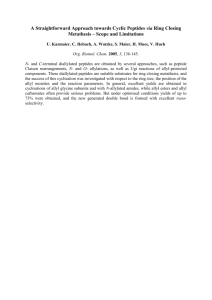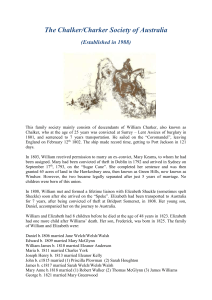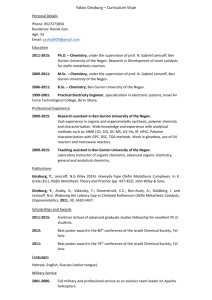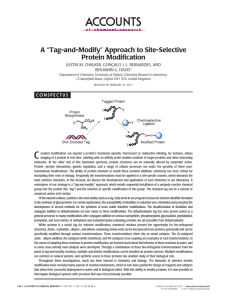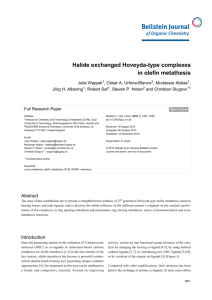Format Guidelines
advertisement
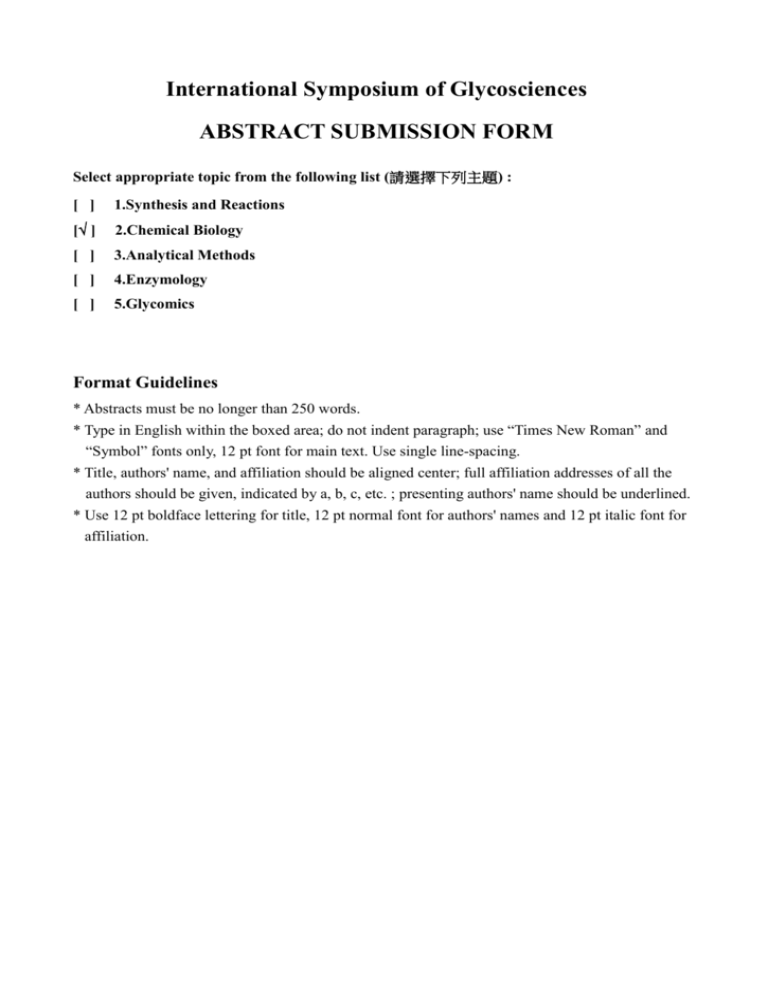
International Symposium of Glycosciences ABSTRACT SUBMISSION FORM Select appropriate topic from the following list (請選擇下列主題) : [ ] 1.Synthesis and Reactions [ ] 2.Chemical Biology [ ] 3.Analytical Methods [ ] 4.Enzymology [ ] 5.Glycomics Format Guidelines * Abstracts must be no longer than 250 words. * Type in English within the boxed area; do not indent paragraph; use “Times New Roman” and “Symbol” fonts only, 12 pt font for main text. Use single line-spacing. * Title, authors' name, and affiliation should be aligned center; full affiliation addresses of all the authors should be given, indicated by a, b, c, etc. ; presenting authors' name should be underlined. * Use 12 pt boldface lettering for title, 12 pt normal font for authors' names and 12 pt italic font for affiliation. Paper Number will be added here Olefin Metathesis for Site-Selective Protein Modifications Yuya A. Lin, Justin M. Chalker, Benjamin G. Davis* Department of Chemistry, University of Oxford, Chemistry Research Laboratory, Oxford OX1 3TA, UK Precise modification of proteins is an important strategy for better understanding of the natural post-translational modifications of proteins in biology.1 Olefin metathesis has recently emerged as a useful reaction for selective carbon–carbon bond formation on biomolecules.2 Our preliminary work showed remarkable reactivity of S-allylcysteine (Sac) in aqueous cross-metathesis (CM).3 The enhanced CM reactivity of allyl sulfides was explained with a mechanism invoking sulfur pre-coordination to ruthenium in the second-generation precatalyst leading to rapid catalyst activation. Enhanced reactivity of allyl sulfide in CM motivated us to develop chemical means of converting cysteine to Sac on protein surfaces.4 Ready access to Sac on protein surfaces indeed enabled the first examples of protein modification by CM.3 In order to further understand the scope and limitation of CM on protein, the substrate scope, linker selection and steric effects were all considered. Allyl chalcogenides were found to be generally reactive substrates in olefin metathesis. Allyl selenides, in particular, were found to be more reactive than allyl sulfides in metathesis allowing greater range of protein modifications which were difficult to achieve with allyl sulfides. The concepts examined not only provided useful guidelines for reliable protein modification using CM, they served further understanding of allylic chalcogen activation in olefin metathesis, which can be beneficial in general synthetic applications. (1) (a) Carrico, I. S. Chem. Soc. Rev. 2008, 37, 1423-1431. (b) Gamblin, D. P.; van Kasteren, S. I.; Chalker, J. M.; Davis, B. G. FEBS J. 2008, 275, 1949-1959. (c) Chalker, J. M.; Bernardes, G. J. L.; Lin, Y. A.; Davis, B. G. Chem.–Asian J. 2009, 4, 630-640. (d) Basle, E.; Joubert, N.; Pucheault, M. Chem. Biol. 2010, 17, 213-227. (2) (a) Lin, Y. A.; Chalker, J. M.; Davis, B. G. ChemBioChem 2009, 10, 959-969. (b) Binder, J. B.; Raines, R. T. Curr. Opin. Chem. Biol. 2008, 12, 767-773. (3) Lin, Y. A.; Chalker, J. M.; Floyd, N.; Bernardes, G. J. L.; Davis, B. G. J. Am. Chem. Soc. 2008, 130, 9642-9643. (4) Chalker, J. M.; Lin, Y. A.; Boutureira, O.; Davis, B. G. Chem. Commun. 2009, 3714-3716.
